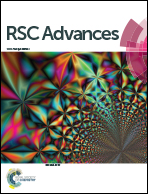Formation of nanoplate-based clew-like ZnO mesocrystals and their photocatalysis application
Abstract
Clew-like ZnO mesocrystals comprised of ZnO nanoplates were created through a hydrothermal procedure in an aqueous solution using tartaric acid as the structure-directing additive. A detailed formation process of the nanoplate-based clew-like ZnO mesocrystal was investigated by varying reaction conditions especially the concentration of hexamethylenetetramine (HMT) and reaction time. It was found that the concentration of HMT played a significant role in the size distribution of ZnO products and the pileup degree of the nanoplates. Combined with the results obtained from the systematic time-dependent experiments, the formation of the nanoplate-based ZnO mesocrystal was mainly ascribed to the synergistic effect of the dipole moment generated among nanoplates and the electric field derived from a pre-formed inner core. The photocatalytic activity of samples synthesized using different HMT concentrations was also investigated. The results demonstrated that the adsorption percentage in the dark and degradation efficiency under UV-light irradiation were gradually improved with increasing the concentration of HMT. This was mainly ascribed to the increased specific surface area which promoted the migration of photon-generated carriers between the photocatalysts and rhodamine B (RhB) molecules.


 Please wait while we load your content...
Please wait while we load your content...